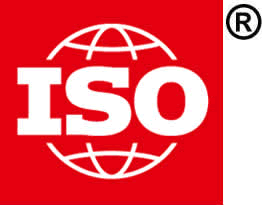
The main purpose of every company that has commercial concerns is to make a profit. Making a profit is not as easy as it seems in economies where there is competition. Imagine you are producing such a product or service that has no other competitors in the market, or that the consumers who demand your product cannot give up on it or replace it with another product. You wouldn’t have any concerns about making a profit if you wanted to sell such a product, would you? You wouldn’t think about the price or the quality of the product that you produce. No matter how you produce it and how much you sell it for, there will always be a demand. However, such a product or service is almost non-existent in today’s world. In free markets where competition is so intense, companies often feel the pressure of falling prices and decreasing profit margins in line with the demands of their customers. When the customers are purchasing a product or a service they will also demand: Cheap price, high quality, fast delivery and after-sales service. They will not want to sacrifice one for the other. They will not accept a poor quality service even if it’s for free. However, the price will increase depending on the other three factors. For this reason, companies will often position themselves based on customer perspective. The brand of the company, either willingly or unwillingly, will be positioned in the Price Quality Balance graph as high quality-high price, high quality- reasonable price, low quality-reasonable price or low quality-high price. The most preferred and targeted positioning for companies is naturally high quality-high price. However, the customer will want to obtain high quality for a reasonable price. For example, in the automobile industry, while Mercedes and BMW offer high quality for higher prices and position their brands as such, Volkswagen produces quality vehicles at a relatively affordable price.
The question of where are we positioned as a company on the above graph?” can be answered in several ways. We can ask this question to both ourselves and our customers (current or potential). You may be receiving comments from both your external customers and your internal customers (employees) from time to time that your service costs are high. Well, if we were to consider that your prices are higher than your competitors in the market; isn't it necessary for your quality to be as high as your prices in order to maintain your service sales, maintain/increase your customers and most importantly profit? If you were to give an honest answer in this respect, where would you position yourself on the graph as an individual, a team, a department, and as the entire company?
Quality is the ability of a product or service to meet customer expectations and requirements. The quality concept, depending on the expectations of consumers, is a concept that varies according to the cultural development, likings and habits of a society. The aim is to better capture customer likes and needs and to produce better products and services than competitors. Quality is customer satisfaction; the customer makes the final decision as to whether the product or service is good. It’s a process, it ensures an ongoing development. It’s an investment; it’s cheaper to do a job without mistakes in the long run than to correct it afterwards. Quality is to comply with a program and to do things on time. Quality is a systematic approach to perfection. Quality is conformance to requirements. [1]
The International Organization for Standardization (ISO) is an organization with its headquarters based in Geneva, Switzerland, with a membership of 164 countries. The purpose of this organization is to produce documents that provide specifications, features, guides or characteristics that can be used continuously to ensure that materials, products, processes and services are in compliance with their purpose. Two of these standards are especially important for companies that provide consultancy in the intellectual property rights sector: ISO 9001: 2015 Quality Management System and ISO / IEC 27001: 2013, Information Security Management System. The quality position of companies that work in accordance with these two standards will increase in the eyes of customers, as well as a company that complies with these standards and adjusts their way of thinking and doing business accordingly will maximize its competitiveness.
ISO 9001 and 27001 management systems benefit the company in terms of both external and internal customers. Some of the benefits in terms of the external customers are as follows:
1- Strengthening the image of the business
2- Customer satisfaction
3- Customer growth
4- Increase in competitive capacity
5- Better supplier relationships
Some of the benefits in terms of the internal customer may be listed as follows:
1- Effectiveness of the management
2- Positive cultural change
3- Emergence of quality awareness
4- Better documentation
5- Systematization
6- Standardization and consistency
7- Increased efficiency and productivity
8- Cost reduction
In companies that take action to implement these two management systems the priority is to change the perspective of the company employees from top to bottom and change their mentality of doing work. Change frightens everyone, it is difficult and frustrating, but we can’t get anywhere without facing challenges. This change is necessary in order for you to raise your standards above those of your competitors, to protect the reputation you have rightfully gained in the market, and to satisfy your customers, who believe and trust in you. You will feel the need to shed your skin in order to grow and to gain strength. The goal of the companies should be to develop happy employees who provide quality and reliable services.